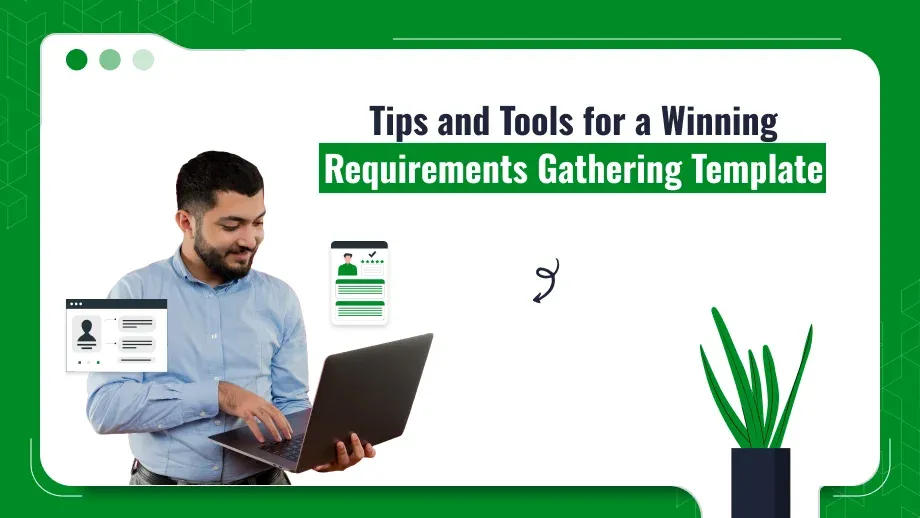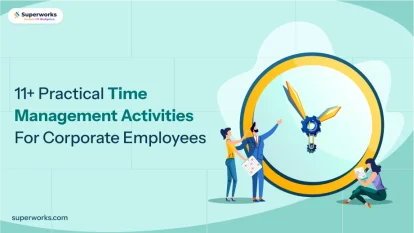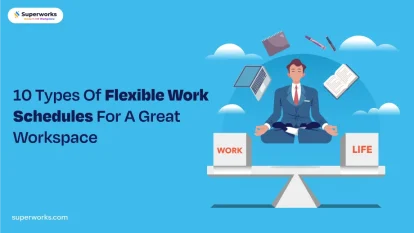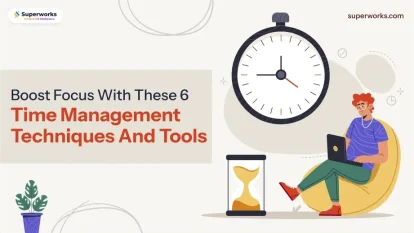
Requirements gathering is a basic stage in the project management lifecycle, laying the basis for fruitful project execution. This handle includes understanding the needs, desires, and imperatives of all partners. Whether you’re developing software, planning a item, or overseeing any project, having a clear understanding of the prerequisites is basic to guarantee that the last deliverable meets its aiming reason. This direct investigates the components of a computer software requirements gathering template, traces best hones for viable gathering, and talks about instruments that can upgrade the process.
What is Requirements Gathering Template?
Requirements gathering is the precise handle of recognizing, collect requirements, and archiving the prerequisites for a project. It serves as a bridge between partners, guaranteeing that everybody is adjusted on what needs to be conveyed. This stage is basic since it minimizes the chances of mistaken assumptions and misalignments that might crash a project.
During this prepare, project managers and groups lock in with partners, counting clients, clients, and group individuals, to accumulate bits of knowledge almost what they anticipate from the project. These bits of knowledge may incorporate utilitarian necessities (what the framework ought to do) and non-functional necessities (how the framework ought to perform).
Effective requirements gathering not as it were recognizes the needs of partners but too makes a difference in characterising the venture scope. By clarifying what is included and avoided from the project, groups can maintain a strategic distance from scope crawl, which is the inclination for project prerequisites to increment over time.
The Importance of a Requirements Gathering Template
Utilizing a requirements gathering template offers a few preferences that can altogether improve the viability of the requirements gathering process:
- Clarity and Consistency: A organized format guarantees that all necessities are recorded clearly and reliably, lessening uncertainty. When everybody employments the same layout, it cultivates a shared understanding of the requirements.
- Improved Communication: A standardized organize encourages superior communication among partners, permitting everybody to get it the desires. This makes a difference in tending to any concerns or misguided judgments early in the process.
- Time Efficiency: Formats spare time by giving a predefined organize for gathering and recording necessities, empowering groups to center on the substance or maybe than the structure. This productivity is significant, particularly in fast-paced project environments.
- Easier Tracking: A requirements gathering layout disentangles following changes and upgrades all through the project lifecycle. It permits for simple recognizable proof of what has changed and why, which is fundamental for keeping up arrangement with stakeholders.
- Enhanced Collaboration: When a requirements gathering template is shared among group individuals and partners, it cultivates collaboration. Group individuals can effortlessly contribute to the documentation prepare, guaranteeing that all points of view are considered.
Components of a Requirements Gathering Template
A well-structured requirements gathering template regularly comprises a few key sections:
- Project Overview:
- Project Name: Clearly state the title of the project.
- Project Description: Provide a brief summary outlining the project’s objectives and goals. This section sets the context for the requirements.
- Stakeholders: List all key stakeholders involved in the project, including their roles and responsibilities.
- Requirements Identification:
- Functional Requirements: Document detailed descriptions of the functionalities that the system or product should provide.
- Non-Functional Requirements: Outline specifications that define the quality attributes, such as performance, usability, and security.
- User Stories: Include short, concise descriptions of features from the perspective of the user.
- Acceptance Criteria:
- Define the criteria that must be met for each requirement to be considered complete, ensuring stakeholders understand what constitutes successful delivery.
- Priority Levels:
- Identify essential requirements that are critical for project success.
- Document important requirements that add significant value but are not critical.
- Note the nice-to-have features that can be included if time and resources allow. Prioritization is essential for managing project scope effectively.
- Assumptions and Constraints:
- Assumptions: List conditions believed to be true for the project, which may impact the requirements. This could include assumptions about user behavior or technology performance.
- Constraints: Identify limitations or restrictions that could affect the project, such as budget or timeline. Understanding constraints is crucial for realistic planning.
- Change Management Process:
- Outline the procedure for handling changes in requirements, detailing how changes will be communicated and documented. A clear change management process helps maintain control over the project scope and ensures all stakeholders are informed of changes.
Download Requirement Gathering Template
Note: You can download directly from here and edit as per your need.
Best Practices for Effective Requirements Gathering
To maximize the viability of your requirements gathering endeavors, consider the taking after best practices:
- Engage Partners Early: Include all significant partners from the starting to guarantee their needs and desires are captured accurately.
- Use Open-Ended Questions: Amid interviews and talks, inquire open-ended questions to empower nitty gritty reactions, revealing bits of knowledge that might not surface with closed questions.
- Facilitate Workshops: Organize workshops where partners can collaborate and brainstorm necessities together. This strategy cultivates a sense of proprietorship and makes a difference produce a comprehensive set of requirements.
- Utilize Visual Helps: Utilize graphs, flowcharts, and models to outwardly speak to necessities. Visual helps can offer assistance partners way better get it complex prerequisites and encourage discussions.
- Document Everything: Guarantee that all discourses, choices, and assentions are recorded clearly. This documentation serves as a reference point for partners all through the project.
- Review and Approve Prerequisites: Frequently survey prerequisites with partners to approve their exactness and pertinence. This hone makes a difference capture errors early and guarantees that everybody remains aligned.
- Prioritize Requirements: Work collaboratively with partners to prioritize necessities based on their significance to project success. Prioritization makes a difference oversee scope and guarantees that the most basic prerequisites are tended to first.
- Conduct Normal Check-Ins: Plan standard check-ins with partners to talk about advance and any developing issues. Ceaseless communication makes a difference keep up arrangement and addresses concerns proactively.
Streamline Your Projects – Use a Requirements Gathering Template!
Capture essential project needs for clarity and success from the start.
Tools for Requirements Gathering
Several requirement gathering tools can upgrade the prerequisites gathering prepare, making it more effective and organized:
Interviews
- Description: One-on-one discussions with partners to assemble point by point information.
- Best For: Understanding needs, inclinations, and desires specifically from clients or clients.
Surveys and Questionnaires
- Description: Organized shapes that permit a wide group of onlookers to give input.
- Best For: Collecting quantitative information and conclusions from numerous partners quickly.
Workshops
- Description: Collaborative sessions where partners come together to talk about and characterize requirements.
- Best For: Generating ideas and coming to a agreement among differing groups.
Focus Groups
- Description: Little bunches of clients giving input on concepts, items, or features.
- Best For: Picking up experiences on client recognitions and ease of use issues.
Observation
- Description: Observing clients connected with frameworks or forms to get it workflows and torment points.
- Best For: Distinguishing real-world utilization and challenges that may not be enunciated in interviews.
Prototyping
- Description: Making preparatory forms of a item or framework to accumulate feedback.
- Best For: Visualizing necessities and refining thoughts based on client interaction.
Use Cases and User Stories
- Description: Depicting how clients will associated with the framework in particular scenarios.
- Best For: Capturing useful prerequisites and understanding client needs.
Document Analysis
- Description: Looking into existing documentation to extricate significant data almost current frameworks and processes.
- Best For: Understanding bequest frameworks or compliance requirements.
Mind Mapping
- Description: Visual representation of data to investigate and organize requirements.
- Best For: Creating thoughts and seeing connections between diverse requirements.
Collaboration Tools
- Description: Program like Intersection, Trello, or Asana to record and track requirements.
- Best For: Encouraging collaboration and keeping up a single source of truth for prerequisites.
Challenges in Requirements Gathering
Despite its significance, requirements gathering can be full with challenges. Common challenges include:
- Miscommunication: Errors can emerge when partners utilize distinctive phrasing or have changing desires. Clear communication is imperative to minimize this risk.
- Incomplete Requirements: Partners may ignore vital prerequisites amid dialogs, driving to holes in documentation. Empowering comprehensive discourses and utilizing checklists can offer assistance relieve this issue.
- Changing Requirements: Partners may alter their minds or present modern prerequisites as the project advances. Actualizing a alter administration handle can offer assistance oversee these changes effectively.
- Limited Stakeholder Engagement: If key partners are not locked in all through the prepare, imperative bits of knowledge may be missed. It is basic to guarantee that all significant partners are involved.
- Over-Reliance on Documentation: Whereas documentation is significant, an over-reliance on it can lead to a need of adaptability. It’s critical to adjust documentation with continuous communication and collaboration.
Conclusion
A well-crafted requirements gathering template is an important asset for project managers and groups. It not as it were encourages clear communication and understanding among partners but moreover gives an organized approach to collecting and recording necessities. By following the best hones and utilizing the right devices, such as project manager software, you can upgrade the adequacy of your requirements gathering process, eventually driving to effective venture outcomes.
Thorough requirements gathering is key to smoother project execution and arrangement with partner desires. By executing the methodologies examined in this direct, you can guarantee that your requirements gathering process is productive, comprehensive, and viable, clearing the way for effective project delivery.
With a centre on clarity, collaboration, and nonstop enhancement, your group can explore the complexities of project requirements with certainty, setting the organize for a effective project result. Continuously keep in mind that the necessities you accumulate nowadays will characterise the victory of your requirements you gather. For project managers, counting Project Manager Resume and Freelance Project Manager encounters, successfully overseeing necessities is a key expertise that improves their attractiveness in the work market.
By utilizing best payroll software arrangements like Superworks, organisations can streamline their extend administration forms, making it simpler to track prerequisites and guarantee compliance with partner needs.






